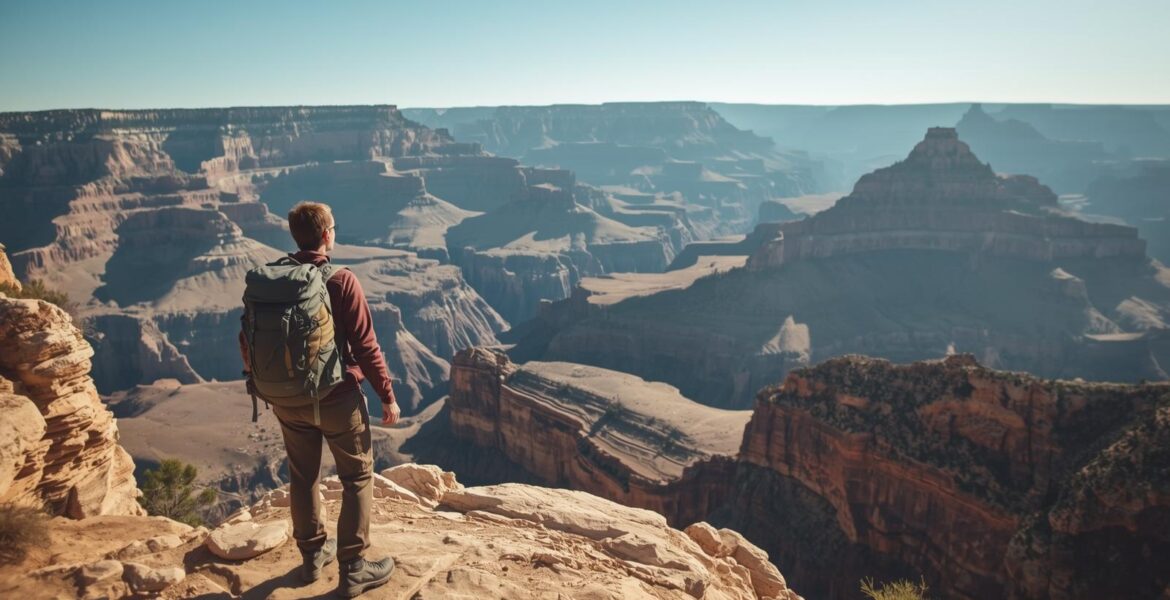Nestled within the rugged expanse of Arizona, the Grand Canyon is a magnificent testament to nature’s grandeur. Its vastness and beauty, carved by the relentless flow of the Colorado River, beckon adventurers from all corners of the globe. Hiking in this natural wonder is an unforgettable experience, yet it demands respect and careful preparation. Here, we explore essential safety guidelines for hiking the Grand Canyon, ensuring your journey is both awe-inspiring and secure.
The Grand Canyon is not just a singular trail but a complex network of paths that descend into the canyon’s depths. Each trail offers unique challenges and rewards, requiring hikers to choose wisely based on their experience and physical condition.
- Bright Angel Trail: Known for its stunning vistas and historical significance, this trail is well-maintained yet deceptively challenging due to its steep ascent on the return journey.
- South Kaibab Trail: Offers panoramic views with fewer water sources, demanding hikers carry ample water supplies.
- North Kaibab Trail: Less traveled and more remote, this trail provides solitude but requires a higher level of preparedness due to its length and elevation changes.
Understanding these trails is crucial. Researching the specific conditions and challenges of each path can help you select the one that aligns with your abilities.
Preparation is the cornerstone of a successful Grand Canyon hike. Proper planning not only enhances the experience but also ensures safety throughout the journey.
- Hydration: Carry at least three liters of water per person, more if temperatures soar. Consider adding electrolyte supplements to avoid dehydration.
- Nutrition: High-energy snacks like nuts, dried fruits, and energy bars can sustain you during the hike. A balanced meal before starting is also advisable.
- Clothing: Dress in layers to adapt to temperature changes, and wear sturdy hiking boots to navigate rocky terrain.
- Sun Protection: Sunscreen, sunglasses, and a wide-brimmed hat are essential to protect against the intense desert sun.
- Navigation Tools: A reliable map, compass, or GPS device will help you stay on course.
The physical demands of hiking the Grand Canyon can surprise even seasoned hikers. Training through regular cardiovascular exercises and strength training will prepare your body for the rigors of canyon hiking. It’s advisable to start training several months in advance to build endurance and strength.
The Grand Canyon’s weather can be unpredictable, with temperatures varying drastically between the rim and the canyon floor. Understanding these variations is crucial for a safe hiking experience.
- Spring and Fall: These seasons offer the most temperate weather, with cooler temperatures and less crowded trails.
- Summer: Temperatures can soar above 100°F (38°C) at the canyon floor, making hydration and sun protection vital.
- Winter: Snow and ice can make trails treacherous, requiring additional gear such as crampons or trekking poles.
Monitoring the weather forecast before and during your hike can help you prepare appropriately and avoid unexpected conditions.
Hiking in the Grand Canyon is not without risks, but by taking certain precautions, you can ensure a safer experience.
It’s essential to hike within your physical limits and to recognize signs of exhaustion or dehydration. Listen to your body, and be willing to turn back if conditions become too challenging.
Always inform someone of your hiking plans, including your expected return time. Carry a basic first-aid kit, and familiarize yourself with emergency procedures in the park. Mobile phone signals are unreliable, so consider carrying a whistle or a personal locator beacon.
The Grand Canyon is home to diverse wildlife. While encounters are rare, understanding how to react to animals like snakes or mountain lions is important. Maintain a safe distance and never feed or approach wildlife.
Beyond safety, hiking the Grand Canyon is about immersing yourself in the profound beauty and tranquility of this natural wonder. Take time to appreciate the subtle hues of the canyon walls, the whisper of the wind, and the grandeur of the landscape.
Preserve the canyon’s pristine beauty by following Leave No Trace principles. Pack out all trash, stay on designated trails, and respect the natural and cultural heritage of this sacred landscape.
Bring a camera to document your journey, but remember to pause and truly absorb the experience beyond the lens. These moments of reflection are the essence of meaningful travel.
Hiking the Grand Canyon is an adventure that promises both challenge and reward. By preparing thoroughly, respecting the environment, and prioritizing safety, you can embark on a journey that not only enriches your soul but also deepens your connection with one of the world’s most awe-inspiring natural wonders.
Whether you’re a travel agent crafting unique itineraries, a lifestyle influencer seeking fresh content, or a hotel manager aiming to attract discerning guests, understanding and sharing these safety guidelines can enhance your appreciation of the Grand Canyon and inspire others to explore it with care and reverence.


